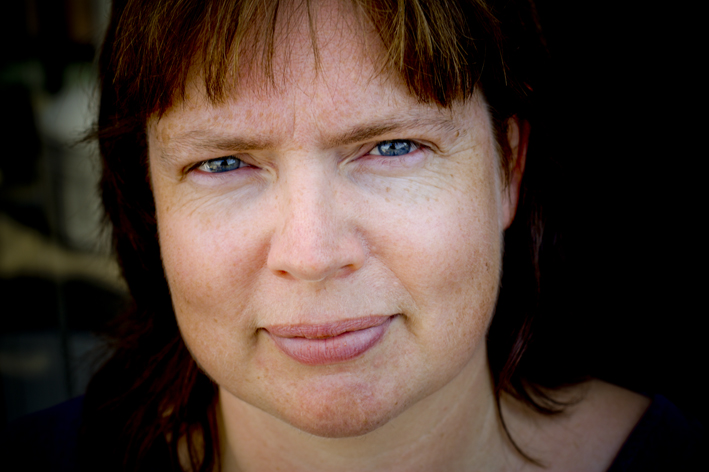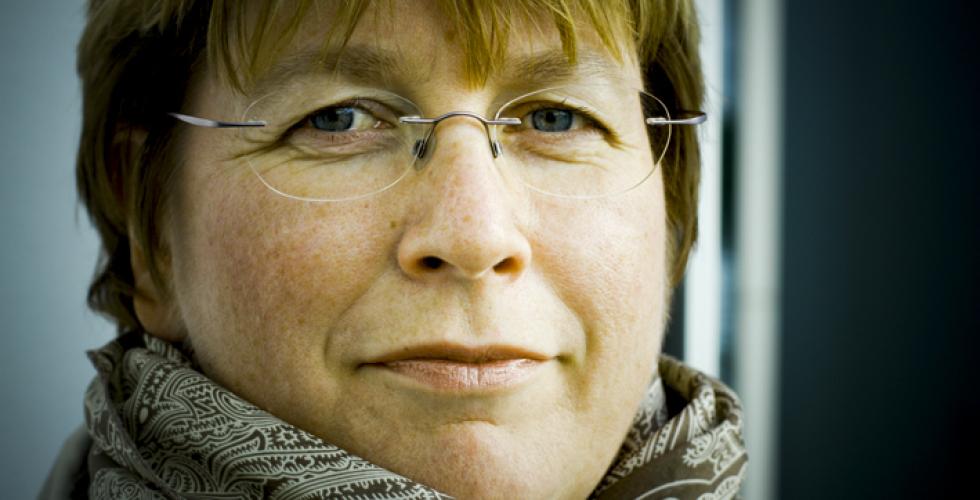Diversity statistics raise new questions
The percentage of immigrants and people with an immigrant background has increased in all position categories and subject areas in Norwegian research. This is one of the findings from the first official diversity statistics for academia.

How many employees with a minority background work in the R&D sector? How are they distributed among subject areas and position categories? Who are they really? And do they experience discrimination in the academic labour market? These were questions that arose when the KIF Committee was given an expanded mandate in 2014 that includes ethnic diversity in addition to gender equality in academia.
Statistics released just before Christmas answer some of these fundamental questions. The statistics have been prepared in a collaboration between the Nordic Institute for Studies in Innovation, Research and Education (NIFU) and Statistics Norway, and were presented as a working paper entitled Mangfoldstatistikk (“Diversity statistics”) (NIFU working paper 2016: 17) at a seminar on diversity in Norwegian academia.
The paper addresses three main areas:
- Immigrants in the R&D sector compared with the Norwegian population as a whole, the student population and people with a higher education.
- Immigrants in the R&D sector compared with non-immigrants in the R&D sector.
- The composition of immigrants in the R&D sector, including their country of origin and gender.
Hebe Gunnes of NIFU is the lead author of the paper, and she is very pleased to finally have a systematic time series for ethnic diversity in academia.
“The work we have just completed will give us a basis for doing this on a regular basis. With this approach we will now have a much better foundation for closely following developments in the field. NIFU and Statistics Norway have put a lot of work into quality assuring the statistics, and we have obtained some interesting numbers,” she says.
“Immigrant subjects?”
The statistics are comprised of data for the years 2007, 2010 and 2014. Data from NIFU’s researcher registry have been linked with registry data from Statistics Norway, which provides information on variables such as country of origin, the year of immigration, and the reason for immigration.
In general, the statistics show an increase in the percentage of immigrants and people with an immigrant background in all parts of the R&D sector and for almost all position categories. The statistics also show that people with an immigrant background are overrepresented in research and higher education compared with the general population.
State Secretary Bjørn Haugstand in the Ministry of Education and Research views these findings in a positive light.
“The fact that immigrants and children of immigrants comprise a larger percentage of the Norwegian research community than of the general population is a sign that we are able to attract talented individuals from abroad. Greater diversity in the academic environments means that international researchers who Norwegians previously met in international forums have now become close colleagues and share office space. We must take advantage of this.”

By the same token, the statistics show that this increase is not distributed evenly. Gunnes of NIFU believes this confirms something we have known for a long time.
“The increase is distributed very unevenly in certain subject areas and positions. This corresponds with feedback we already have from the sector, where it has been clear for a long time that some fields have had problems getting Norwegian applicants to fill positions.”
“What is the reason for this?”
“In some fields there is probably a direct connection with the Norwegian labour market in general, such as in natural science and technology, where we see especially uneven distribution. In those fields, students who recently finished their master’s degree have already found well-paying jobs, and it’s not very appealing to work as a doctoral research fellow,” says Gunnes.
Norway has good conditions for doctoral research fellows in an international perspective. Many students come to Norway to take a doctoral degree because they get a paid position rather than just student status. For example, statistics from NIFU’s doctorate registry show that there was a dramatic increase in the number of doctoral candidates with foreign citizenship during the 2000s.
Cathrine Egeland, a researcher at the Work Research Institute, was responsible for the report on ethnic diversity in academia, “It’s not an advantage to be a foreigner” (in Norwegian only), which was initiated by the KIF Committee. Egeland believes there are also factors pushing academic labour out of the countries of origin.
“Norwegian academia and various subject areas may be more or less attractive for foreign academics for different reasons. This could involve economic crisis and unstable jobs for academics in other countries, and it could be that certain subjects in Norwegian academia are more international in form and content than others,” says Egeland.
Two tracks
When the KIF Committee asked the Ministry of Education and Research to commission the preparation of diversity statistics for the R&D sector, the committee also pointed out that ethnic diversity is not just a single issue.
Immigrants who come as “academic imports” – that is, with a completed degree from another country – are not the same as immigrants and Norwegian-born individuals with immigrant parents who attended school and got an advanced degree in Norway.
The first group involves issues of internationalization and globalization of the academic labour market. The second group entails issues of mobility and mechanisms for inclusion and exclusion in the Norwegian educational system.
This distinction has not been made in the statistics recently presented. But Gunnes of NIFU says it will be possible to separate these groups in the future.
“In some connections it will be interesting to look at these two groups together, but we should also develop a qualitatively good means of studying them individually. This requires a more thorough, detailed review of the data. Then it will be possible to create more precise categories than we have been able to do within the framework of this project.”
Egeland of the Work Research Institute hopes that future statistics will be used to learn more about the research careers of Norwegian immigrant youth.
“Today we know that young people with an immigrant background aspire to become researchers and pursue a doctoral degree, but it is only in the coming years that we will be able to see whether or not they actually realize their plans for a research career. Then we can also study more closely any barriers to children of immigrants in the research and education sector,” says Egeland.
Gender – an equally important variable?
The working paper also addresses how researchers with an immigrant background are distributed among the various position categories. The paper shows that the increase in employees with an immigrant background is especially large in temporary academic positions, such as doctoral and post-doctoral research fellowships.
In 2014, universities and university colleges had the largest percentage with an immigrant background in these positions – 49 percent among doctoral fellows and 40 percent among post-docs. The smallest percentage of immigrants are found in the health trusts, where research personnel with an immigrant background comprises about 20 percent.
In addition, the paper compares gender differences between researchers with an immigrant background and researchers from the majority population. The statistics show that in terms of percentage, the ratio of women to men with an immigrant background is roughly the same as the ratio of women to men without an immigrant background at higher position levels. At lower position levels, however, the differences are much greater.
Among researchers with an immigrant background, men are overrepresented in doctoral and post-doctoral fellowship positions, whereas this pattern is the opposite for researchers from the majority population, with ethnic Norwegian women being overrepresented in these same positions. Gunnes of NIFU thinks this is one of the paper’s most interesting findings.
“The difference between the minority and the majority in the higher position categories is small when we look at women and men as separate groups. This is interesting because there are clear differences at the level of recruitment positions.”
“Yes, the percentage of female professors with an immigrant background is actually 29 percent as compared with 26 percent of professors in general. What could be the reason for this?”
“We don’t have data for this, and I can only speculate. It could indicate that the research and educational institutions in Norway are an attractive career path for female academics from other countries. It may be that there are good working conditions and welfare schemes that make it possible to combine an academic career with family obligations,” says Gunnes.
What will the statistics be used for?
“These statistics will give us a better basis for creating good conditions for international employees, as well as better answers to whether the educational and research institutions are open and inclusive for immigrants and children of immigrants,” says State Secretary Bjørn Haugstad.

Curt Rice, the chair of the KIF Committee, is also very satisfied with the statistics.
“The KIF Committee asked the ministry to allocate resources to prepare statistics on ethnic diversity in academia because the committee discovered a knowledge gap. There was essentially no research on ethnic minorities in Norwegian universities, university colleges and research institutes, and no statistics that indicated the number and percentage of various minority groups,” says Rice.
He notes, however, that this is only the beginning.
“Statistics and qualitative research are needed in order to recommend measures and clarify what progress is being made in this area,” says Rice.
Egeland of the Work Research Institute agrees with this, and notes that averages and percentages give little indication about the processes in the sector that can lead to both discrimination and inclusion.
“I hope that the diversity statistics encourage us to go more in depth. Here are the numbers, but what are they really telling us? To take the next step, there is a need for larger projects that ask more specific questions. At the risk of repeating myself from other contexts, I would also argue here that many of the questions we have about careers and barriers to diversity in academia can best be answered qualitatively.”
She points out that the type of statistics compiled for this project cannot be used to say whether and how discrimination of ethnic minorities occurs.
“In some respects, academic culture is exclusionary by nature. The weakest performers are weeded out. The cream of the crop rise to the top. At the same time, academic institutions are also ordinary organizations with increasing diversity among their employees. This requires a great deal of competency on inclusion. We still know very little about how this is balanced and dealt with in academia,” says Egeland.
Translated by Connie Stultz.
The statistics have been prepared in a collaboration between the Nordic Institute for Studies in Innovation, Research and Education (NIFU) and Statistics Norway.
- The diversity statistics are the first statistical overview of immigrants and Norwegian-born to immigrant parents in positions within research and higher education. So far, statistics have been compiled for the years 2007, 2010 and 2014.
- The percentage of people with an immigrant background has increased in all sectors – at universities and university colleges, in the institute sector and in the health trusts. In 2007, the percentage was 17 percent, while in 2014 it increased to 25 percent.
- People with an immigrant background are distributed unevenly across subject areas. In 2014, people with an immigrant background comprised 45 percent of the academic staff in mathematics and natural science, as compared with only 17 percent in the social sciences.
- The increase in the percentage of immigrants has been largest in temporary positions such as post-docs and project employees. Here, the percentage of immigrants rose from 33 percent in 2007 to 49 percent in 2014.
- The gender distribution among researchers with an immigrant background is very similar among the majority researchers in higher, permanent position levels. The immigrant group is male dominated at the doctoral and post-doctoral level as opposed to non-immigrants in the same position categories.
The working paper entitled “Diversity statistics” (in Norwegian only), NIFU working paper 2016: 17.


